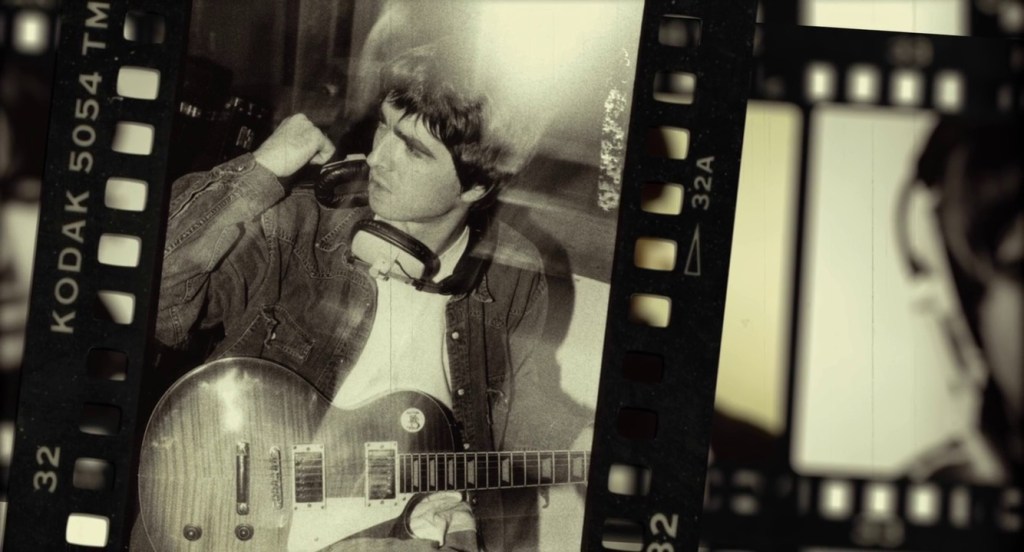
Model: Epiphone Les Paul Standard
Color: Cherry Sunburst
Year: between 1991 and 1993
Used in...
- 1993-1994
- Noel's main guitar between Summer 1993 and Spring 1994
- used to record Supersonic and Shakermaker
- used during the Definitely Maybe recording sessions
- featured in the video of Supersonic
- featured in the artwork of the Supersonic single
Details
Noel's first Les Paul is a Standard finished in Cherry Sunburst, made in Korea by Samick in the early '90s.
Les Pauls with a set-neck have been produced in Korea between 1989 and the mid 2000s1, but the model with these exact features was only made between 1991 and 1995.
Noel bought his one at A1 Music in Manchester2, probably between June and early September 1993. At the famous King Tut gig on 31 May, Noel was seen playing a Riviera, maybe his Antique Sunburst one before the Bigsby vibrato was installed.
The first recorded appearance of the Les Paul is the Canal Cafè bar gig on 14 September.
On the same day - or maybe a day or two before - a rehearsal of the band was filmed at the Boardwalk by Sony executive Bobby Langley: this is the famous clip of All Around the World and I Am the Walrus that has been floating around the net, incorrectly labeled as '1992'.3 In the video, Noel is seen playing his Les Paul through his Marshall/WEM amps.
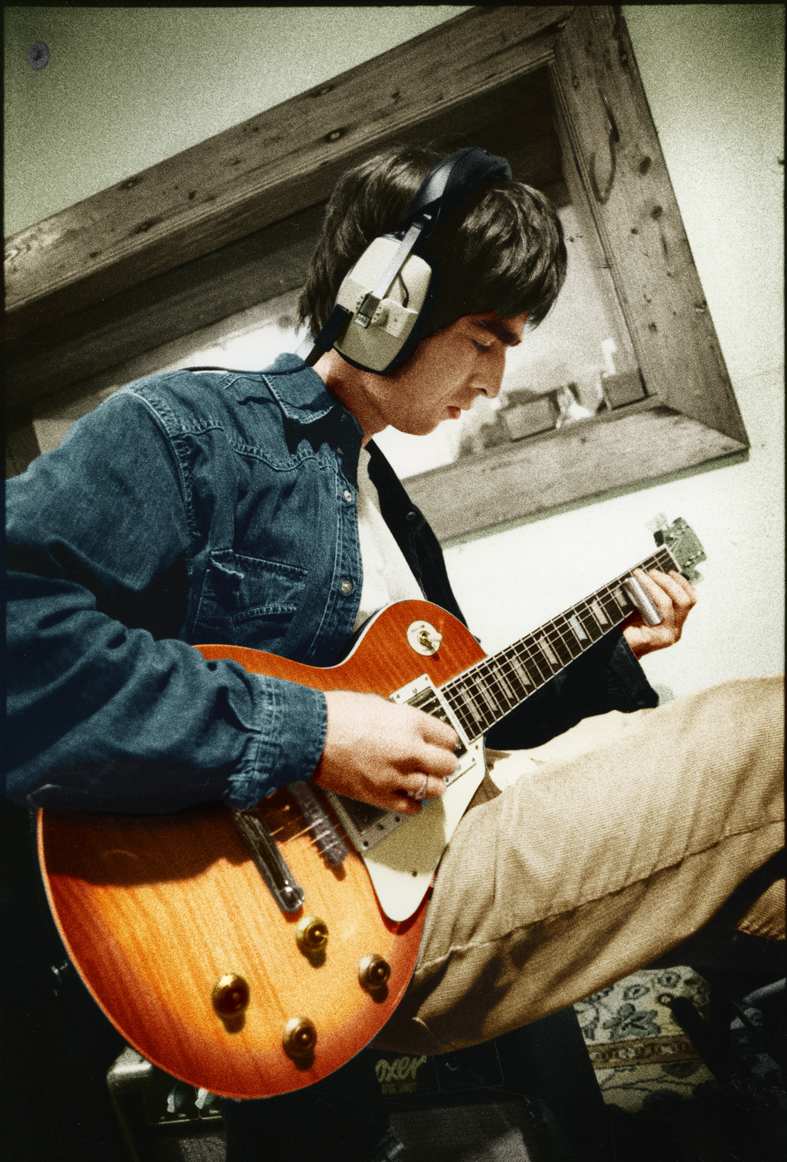
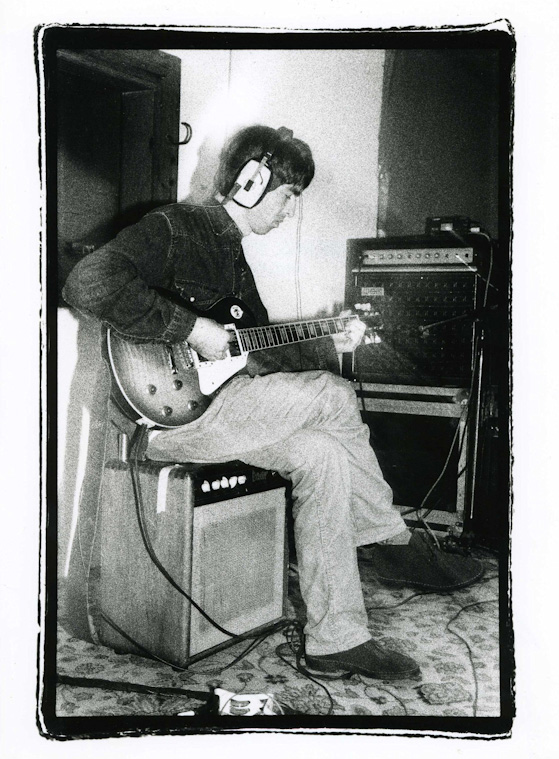
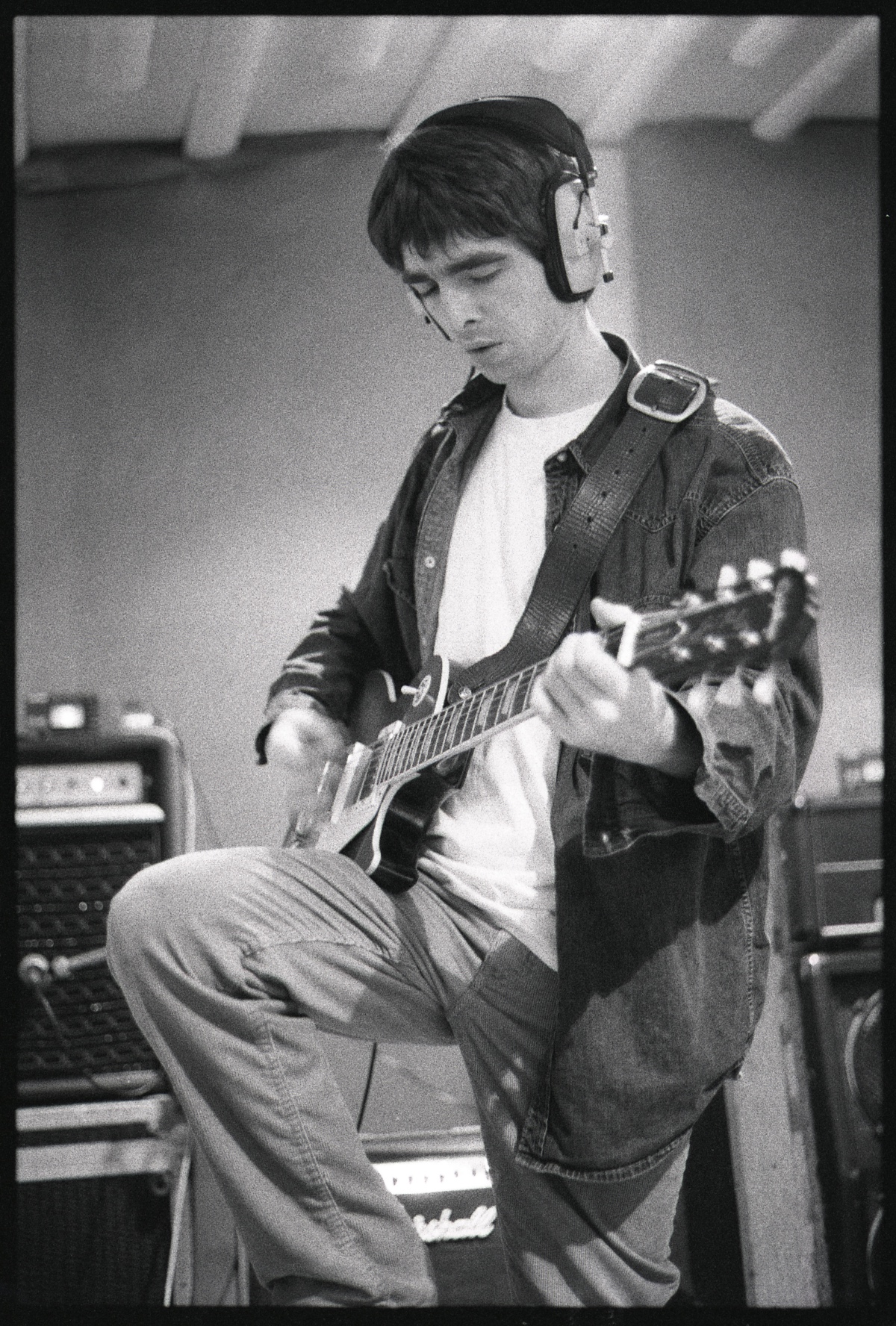
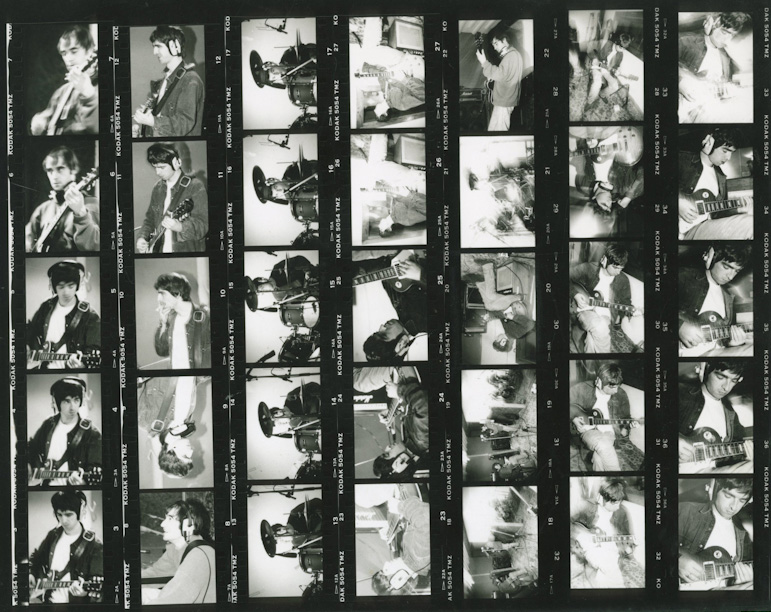
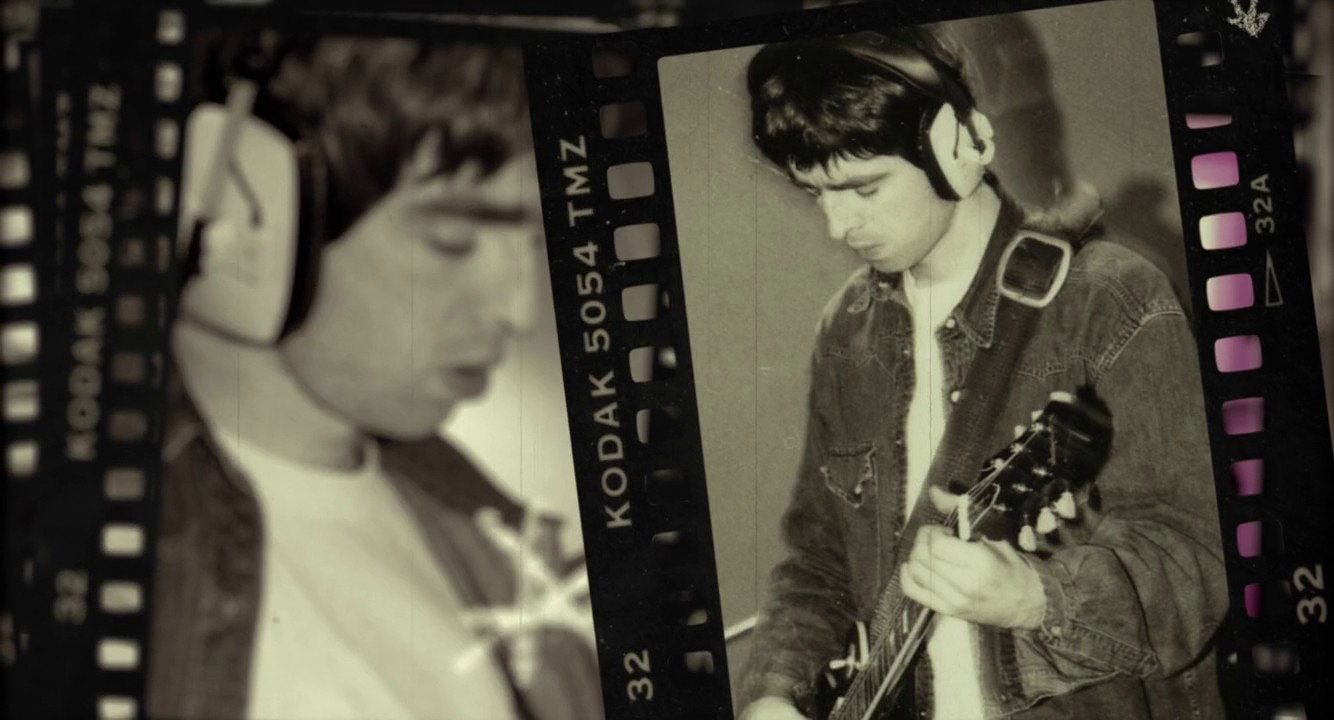
In October 1993, Oasis had a recording session at Out of the Blue studios, Manchester: photographer Micheal Spencer Jones - who later shot those iconic sleeves for the singles and the albums - was there taking his first pictures of the band, while they were putting down a demo of Shakermaker.
This very recording was later remixed by Owen Morris for the Definitely Maybe album, with re-recorded vocals due to the Coca-Cola incident.4
On 18 and 19 December 1993 Oasis booked a session at the Pink Museum in Liverpool to record Bring It On Down for release as their debut single.
The story is well known: the recording of Bring It On Down was quickly aborted because of disagreements over Tony McCarroll's drumming; the band then tried I Will Believe with unsatisfactory results, so Supersonic was written and recorded on the spot starting from a jam they had done in soundcheck.5
The two lead guitar tracks of Supersonic were played by Noel on the Les Paul, as was the guide guitar track that can be heard at the end of the song. Bonehead played rhythm guitar with a Gibson SG owned by recording engineer Dave Scott.
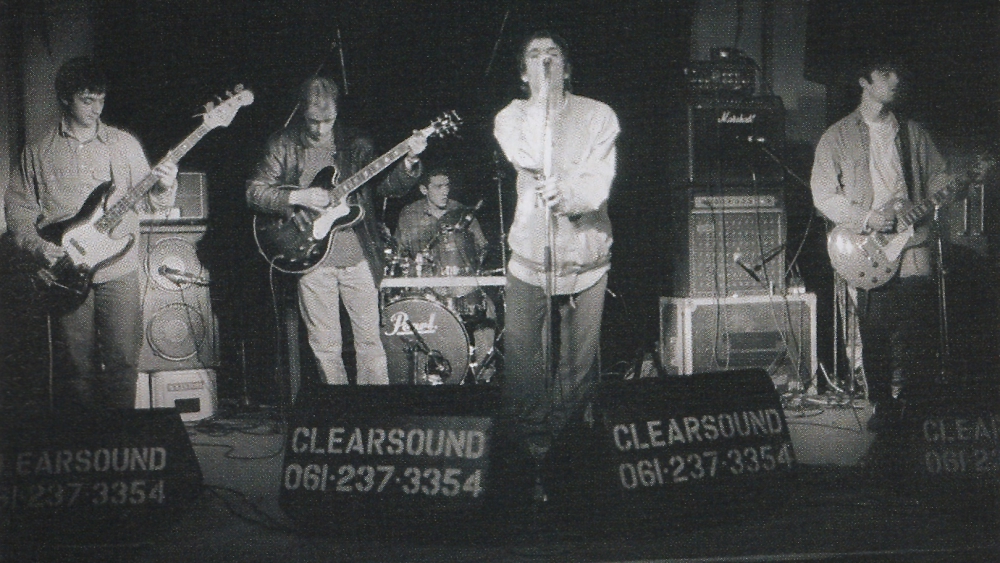
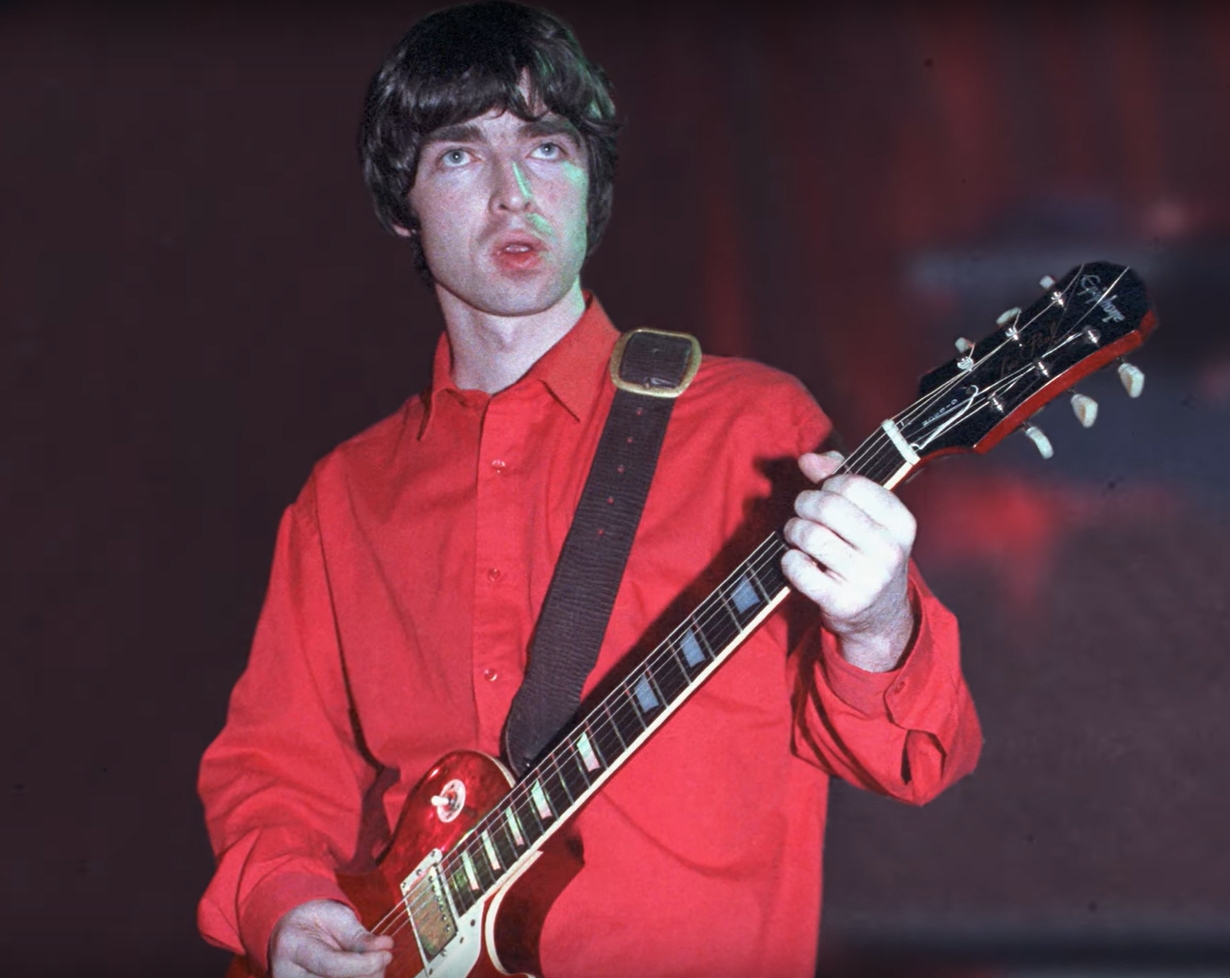

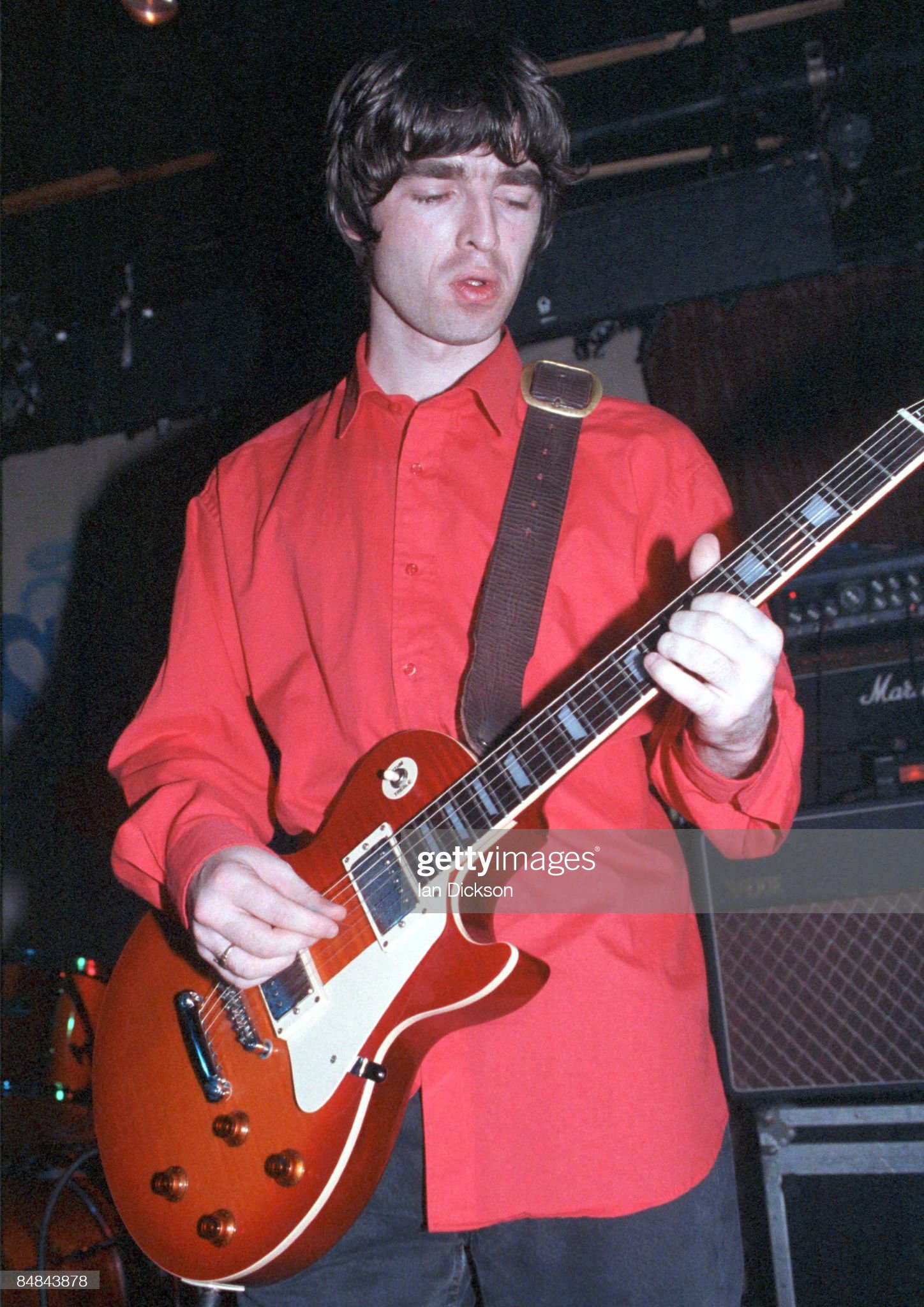
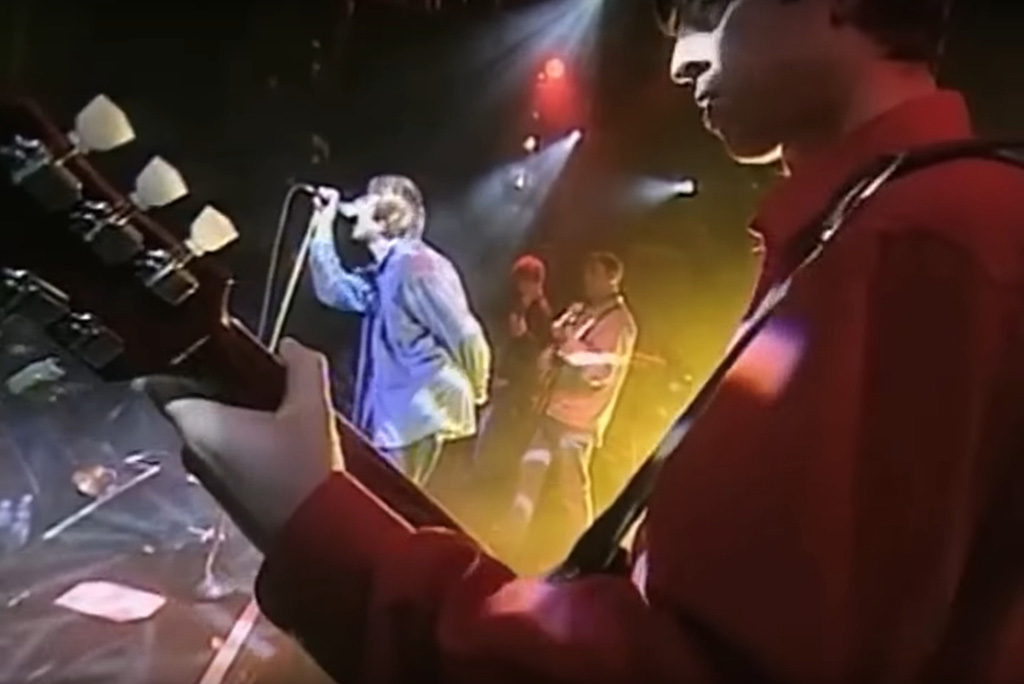
Between 8 and 24 January 1994 Oasis were at Monnow Valley studios to record their debut album, Definitely Maybe. The sleeve photo for the Supersonic single was shot there by Michael Spencer Jones: the Epiphone Les Paul can be seen right in front of the piano.
The Epiphone was used in the recordings, as confirmed by some pictures, but Noel mainly played a few guitars borrowed from Johnny Marr, including the famous Gibson Les Paul "conversion" and the 1980 Flying V.
Actually, most of the Monnow Valley recordings were scrapped: only Slide Away ended up on the final version of the album.
Between 24 February and 4 March 1994 the band relocated to Sawmills studios for a second attempt at recording Definitely Maybe: Noel's main guitars were Johnny's Gibson Les Paul "conversion", this Epiphone Les Paul and the Antique Sunburst Riviera.



On 9 or 10 March 1994 Oasis performed live at Gleneagles Golf Club, in Scotland:6 this was a showcase for Sony executives and it is the first real pro-shot gig of the band. They still hadn't released a single at that time! Noel played the Epiphone Les Paul throughout the gig.
On 13 March the Supersonic video, directed by Mark Szaszy, was filmed in Kings Cross:7 Noel plays the Les Paul in it - as he did on the actual recording of the song.
The date of 18 March 1994 marked the TV debut of Oasis with a live performance of Supersonic, filmed at Teddington Studios for Channel 4's late-night entertainment show 'The Word'.8
This date also marked the first outing of Johnny Marr's Gibson Les Paul "conversion" as Noel's main guitar: the Epiphone is still visible in the background, on stage.
During the band's first UK tour, the Epiphone Les Paul was kept as a spare guitar, likely until June 1994.
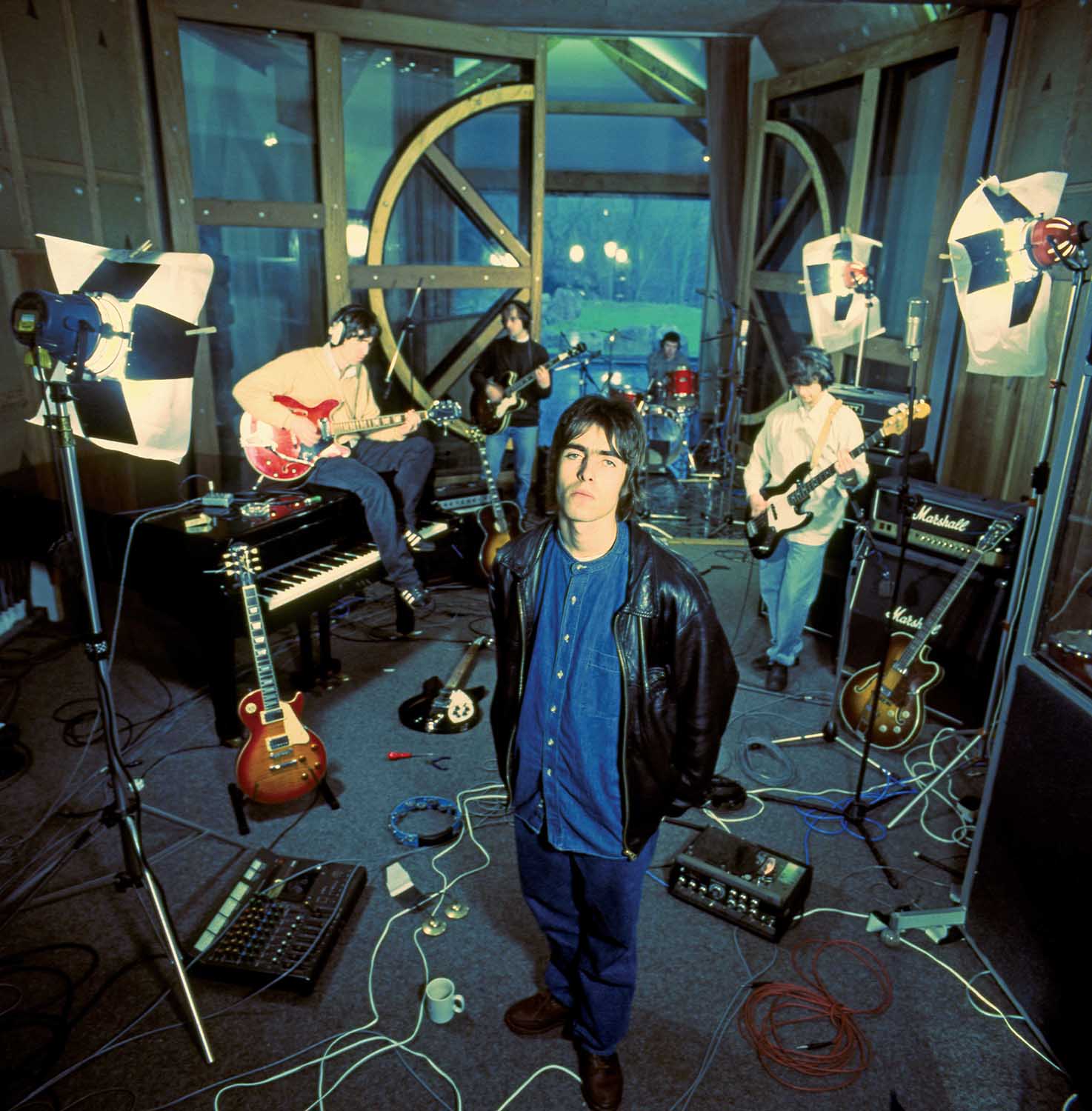
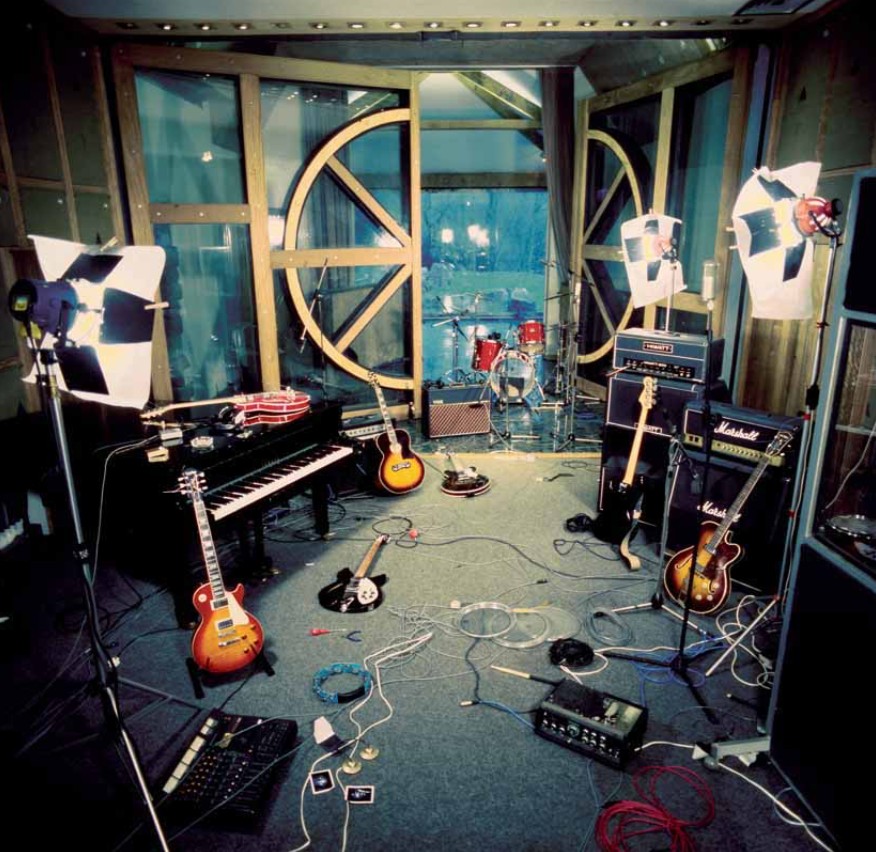
In June 1994, Noel gave the Epiphone Les Paul to his friend Peter Deary, better known as Digsy - the frontman and guitarist of the band Smaller:9
"I used an Epiphone Les Paul. Which I gave, as a matter of fact, to Digsy from Smaller - the band who supported us recently [in 1995]. He's probably fu**ing sold it, being a Scouser. I thought it was going to a good home..."
Actually, Digsy kept the guitar for almost thirty years: it was sold to Rock Solid Investments10 / Pop Icons11 sometime in 2021.
Below are some photos showing how the guitar appears today, courtesy of the current owner. It certainly looks well-lived, and it's missing the toggle switch tip and the bridge pickup volume knob. Every part seems to be original, exactly as it came out of the Epiphone factory in the early '90s.

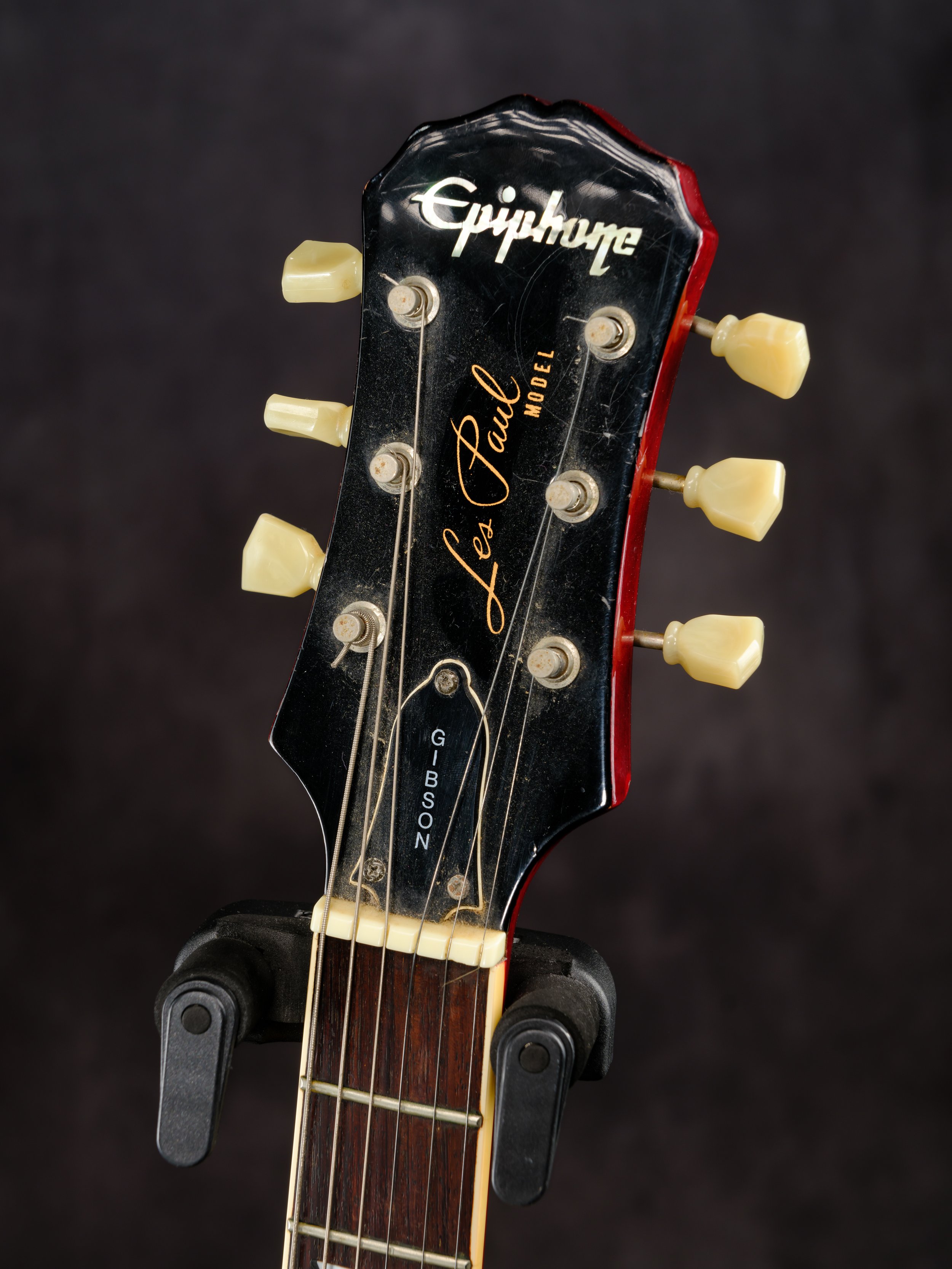



DISCLAIMER
This is a fansite. It is not affiliated with Noel Gallagher, his management or his record label.
For informational and non-commercial use only. Please do NOT publish this content elsewhere.
Visit the “Info & About” page for contact details and more.
- The Epiphone Guitar Book – Walter Carter ↩︎
- thanks to H. – who wishes to remain anonymous. ↩︎
- Thanks to asimarx from the live4ever forum who put together some insight by Oasis Recording Info and Shakermaker‘s Youtube channel. ↩︎
- http://www.oasis-recordinginfo.co.uk/?page_id=588 ↩︎
- http://www.oasis-recordinginfo.co.uk/?page_id=588 ↩︎
- The date of the Gleneagles gig is often reported as 6 February 1994: this is wrong, as confirmed by TheRightEarOfNash and oasis-live.net. ↩︎
- Thanks to oasisunited from the live4ever forum ↩︎
- http://www.oasis-recordinginfo.co.uk/?page_id=455 ↩︎
- Total Guitar, February 1996 ↩︎
- Rock Solid Investments – Noel Gallagher’s Epiphone Les Paul ↩︎
- https://www.popicons.com/ ↩︎
